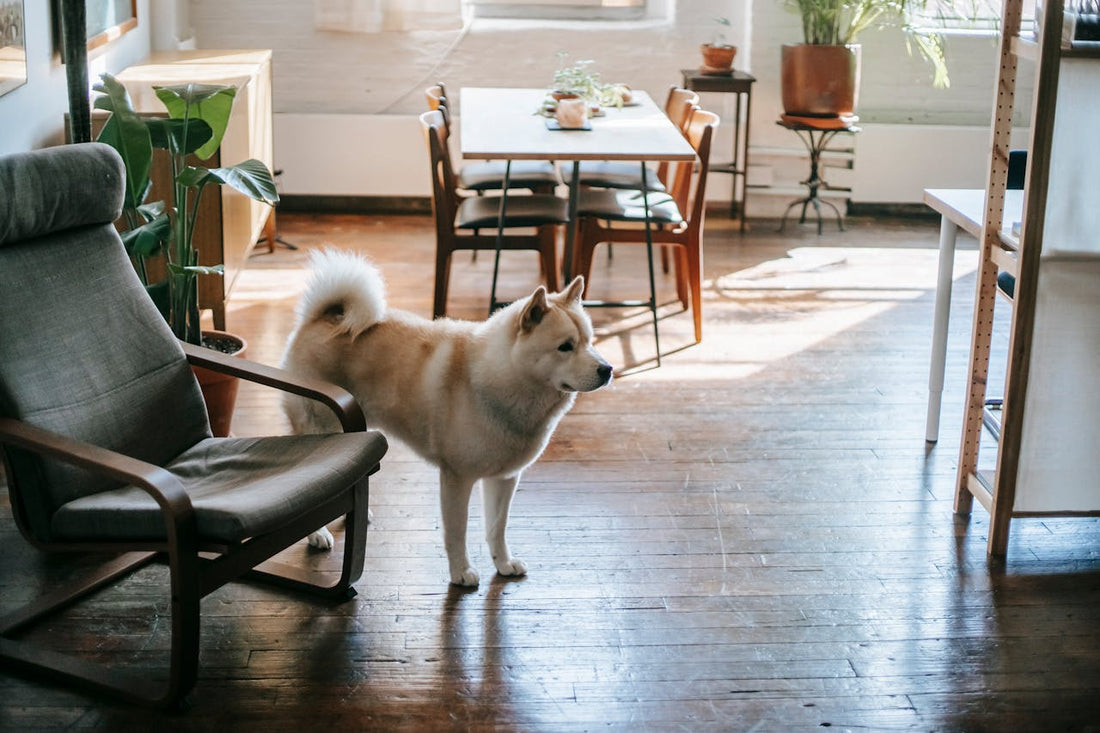Creating a Pet-Friendly Home

Creating a pet-friendly home is essential for the safety and happiness of your furry friends. Whether you have a playful pup or a curious cat, making your living space comfortable and secure for your pets can enhance their well-being and strengthen your bond. In this article, we'll explore essential tips for designing a pet-friendly home that meets your pet's needs while maintaining style and functionality. For new pet owners, check out our guide on 10 Essential Supplies Every New Pet Owner Needs.
Why a Pet-Friendly Home Matters
Pets are part of the family, and like any family member, they need a safe and nurturing environment. A pet-friendly home reduces the risk of accidents, provides mental and physical stimulation, and ensures your pets feel loved and secure. Let's dive into how you can make your home a haven for your pets.
1. Pet-Proof Your Living Space
Safety First: Pet-proofing your home is the first step in creating a safe environment. Remove or secure items that could harm your pet, such as toxic plants, electrical cords, and small objects they could swallow. For more detailed tips, read our post on How to Prevent Fleas and Ticks in Your Home.
Secure Hazardous Areas: Use baby gates to block off areas that are unsafe for pets, like staircases or rooms with delicate items. Ensure all cleaning supplies, medications, and chemicals are stored out of reach, following guidelines from the American Veterinary Medical Association.
2. Comfortable Sleeping Areas
Choose the Right Bed: Invest in a high-quality pet bed that suits your pet's size and sleeping habits. For dogs, consider orthopedic beds for joint support. Cats may prefer cozy, enclosed spaces for napping.
Designated Spaces: Create designated sleeping areas in quiet parts of your home where your pets can relax undisturbed. This provides them with a sense of security and a place to retreat.
3. Provide Enrichment and Entertainment
Interactive Toys: Keep your pets mentally stimulated with a variety of toys. Interactive toys, puzzle feeders, and treat-dispensing toys are excellent for keeping them engaged.
Cat Trees and Dog Play Zones: For cats, install cat trees and perches to satisfy their climbing instincts. Create a designated play zone for dogs with toys and space to move around.
4. Pet-Friendly Furniture and Flooring
Durable Materials: Choose pet-friendly furniture made from durable materials that can withstand scratching and chewing. Leather, microfiber, and tightly woven fabrics are good options.
Easy-to-Clean Flooring: Opt for flooring that is easy to clean and resistant to scratches, such as tile, laminate, or hardwood. Avoid carpets that can trap pet hair and odors.
5. Outdoor Spaces and Safety
Secure Fencing: If you have a yard, ensure it is securely fenced to prevent your pets from escaping. Regularly check for gaps or weak spots in the fence.
Shaded Areas: Provide shaded areas in your yard where your pets can escape the sun. Consider adding a pet-friendly garden with non-toxic plants, as suggested by the ASPCA.
6. Maintain a Clean and Hygienic Environment
Regular Cleaning: Maintain a clean home by vacuuming regularly to remove pet hair and dander. Use pet-safe cleaning products to keep surfaces and floors hygienic, as recommended by the ASPCA.
Grooming Station: Set up a grooming station with brushes, shampoos, and towels. Regular grooming helps reduce shedding and keeps your pets looking their best.
7. Training and Boundaries
Set Boundaries: Train your pets to understand which areas of the home are off-limits. Consistent training helps reinforce boundaries and prevents unwanted behaviors. For training tips and techniques, visit the American Kennel Club.
Positive Reinforcement: Use positive reinforcement techniques to encourage good behavior. Reward your pets with treats and praise when they follow the rules.
Conclusion
Creating a pet-friendly home is all about balancing safety, comfort, and enrichment. By pet-proofing your living space, providing cozy sleeping areas, and offering plenty of stimulation and entertainment, you can ensure your pets are happy and healthy. Remember, a well-designed pet-friendly home not only benefits your pets but also enhances your quality of life as a pet owner.
By following these tips, you can create a harmonious living environment where your pets can thrive. For more pet care advice, visit our articles on Pet Dental Care and Understanding Pet Behavior. Happy pets make happy homes!
